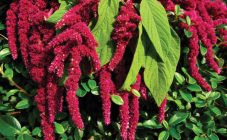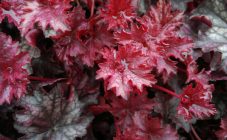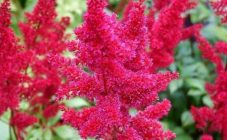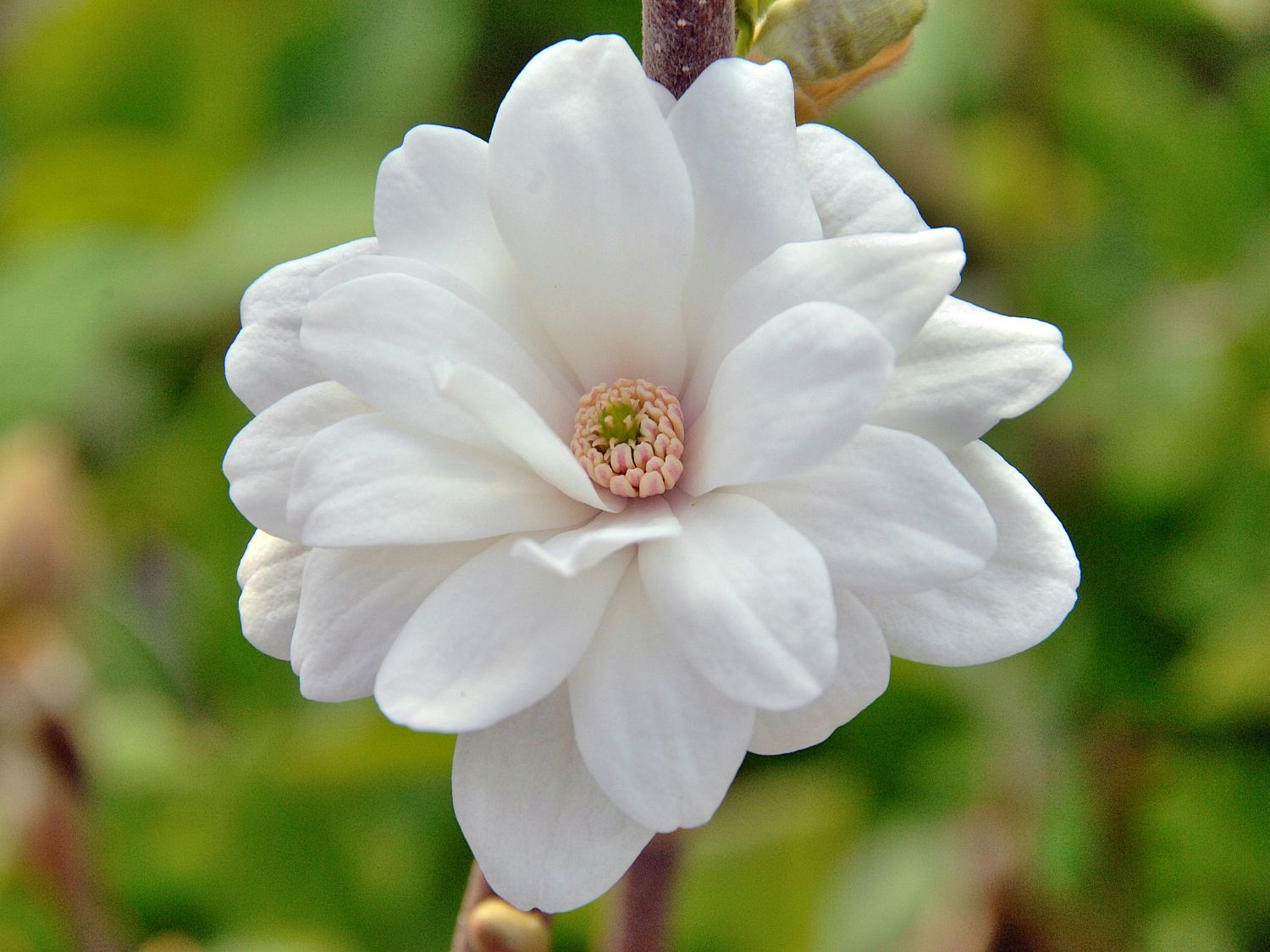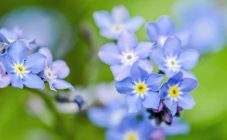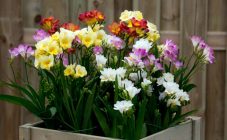Content:
The rudbeckia flower (Latin name - "Rudbéckia") is very similar to the familiar chamomile, in which, instead of white petals, the flower head is decorated with yellow inflorescences of an elegant sunny yellow shade with a spectacular black spot in the center. This unpretentious beauty begins her pedigree from ancient times. Rudbeckia flowers came to Russian gardens from the countries of the northern part of the American continent, where among the local tribes of Indians it was valued for its charming beauty, was used as a medicinal plant.
Its healing properties contributed to the treatment of diseases of the urinary tract, restored the reproductive system, relieved sore throats and healed open wounds. After the discovery of America, the adorable flower, similar to a small sun, moved to European countries, where it quickly acclimatized and settled in European gardens and flower beds. The flower owes its name "rudbeckia" to the famous scientist Karl Linnaeus, who began to call it in honor of his friend, the famous botanist Olaf Rudbek, who lived in Sweden in the 16th century.
The bright and large flowers of this beautiful plant of yellow-orange shades stand out strikingly against the green background of delicate foliage. They are planted in separate groups, stirred along the fence or curb. In landscape design, bright golden hats of rudbeckia are well combined with tender lobelia, stately echinacea, modest chamomile and graceful aster. If you put the flowers cut for a bouquet in a vase, you can admire the golden cloud of this beauty for a long time.
The rudbeckia flower is grown not only for its beauty, its roots and herbs are used in folk medicine for wound healing, anti-inflammatory and antispasmodic effects. Decoctions, tinctures and ointments are used to treat gynecological diseases, as well as prostatitis.
The roots and herb of rudbeckia have medicinal properties: they help with colds, tonsillitis and sore throats. But like many drugs, it has a number of contraindications: drugs from rudbeckia cannot be used during pregnancy, during breastfeeding. For children and individuals with individual intolerance, the use of drugs based on rudbeckia is contraindicated
Plant characteristic
Botanical description of flower culture:
- Rudbeckia belongs to the class of Asteraceae (Asteraceae) plants.
- Variety of varieties. Rudbeckia is grown as an annual plant and as a perennial.
- A light-loving flower, it is allowed to plant in a slightly shaded place in the garden or dacha.
- Moderate humidity conditions.
- The plant is winter-hardy, in the northern regions it requires a protective shelter.
- Grows well in garden soils.
- The height of some varieties reaches 3 meters.
- The root system is powerful and superficial.
The flower stem is usually straight with small lateral branches. The leaves are oval or ovoid and grow in size from 5 to 25 cm. Flower buds vary in size: small "daisies" "can be 5 cm, large" balls "grow up to 15 cm. The flowering period begins in mid-July, everything continues summer and ends in the month of October. The flowers of the plant emit a pleasant, slightly tart aroma, which attracts many bees, bumblebees, butterflies. Collecting tasty nectar, beneficial insects pollinate the flowers, on which, after flowering, seed pods with numerous seeds of an elongated ribbed shape of a gray or brown shade appear.
Description of species and varieties of culture
The main criterion for the classification of a flower culture is the duration of its life cycle; according to this type, rudbeckia is divided into annuals and perennials.
Among this variety, the following plants can be distinguished:
- Rudbeckia dissected, which belongs to the type of perennial flower crops. An unpretentious and hardy plant that grows to a height of 2 meters, large inflorescences reach 10 cm in diameter. Terry buds with a bright yellow center and light tubular petals along the edges bloom from mid-summer until the first frost. Among gardeners, the most popular variety is considered to be the Golden Ball, which began to be planted in gardens in the 16th century.
- Hairy, or hairy (the second name is hirta). The height of an adult plant can reach one meter, the stem is straight or with branched lateral shoots, covered with ovoid leaves. The flower culture is double and simple in shape with inflorescences from 5 to 10 cm. The lingual petals along the edge are usually colored lemon. Golden or bright orange shades prevail. Tubular tongues have darker purple hues.
- Rudbeckia is brilliant. This perennial is a big fan of open sunny areas, does not like shaded areas. This is not surprising, because his homeland is the southern regions of the northern American continent. The plant grows up to 60 cm in height, the inflorescences are star-shaped, with bright orange petals and a purple center. The most popular varieties are Goldsturm and Goldstar.
- Rudbeckia is glossy. Tall perennial culture with large inflorescences, up to 15 cm in diameter. Unusual color of the flower: the ligulate petals located along the edge are colored yellow, and the tubular middle ones are green in color. The most popular and famous varieties are Goldschirm and Herbstzonne.
Flower beds and front gardens often feature unusual flowers similar to rudbeckia. What is the name of this flower culture, and what is the difference between them? It is a close relative of rudbeckia, a popular flowering plant called Echinacea, known in the Americas as Rudbéckia purpunea. These flowers are united only by their external similarity with chamomile, in fact, they are completely different species. The color of the echinacea petals is purple or crimson, and in the rudbeckia the inflorescences are predominantly yellow, orange or red-brown.
Culture care
The rudbeckia flower plant is not a capricious and unpretentious flower, however, its cultivation has its own nuances:
- High demand for sunlight. You can admire the luxurious flowering of rudbeckia only if the plant is illuminated by the sun for at least 8 hours a day.
- The plant grows poorly on too moist and marshy soils.
- In a hot summer, the plant needs timely watering.
For successful cultivation and proper care, you can use the following recommendations:
- The plant needs feeding. The ideal fertilizer is a complex mineral fertilizer for flowers. Also, the plant is watered with a two-week infusion of manure, compiled at the rate of 1:10.
- Regular pruning of faded baskets. The results of such pruning will be long flowering and high decorativeness of the flower garden.
- The winter hardiness of rudbeckia allows wintering in the southern regions without creating protective shelters; for central Russia, it is recommended to cover the plant roots with hay, spruce branches, and straw.
Rudbeckia is propagated by seeds or planting shoots. According to gardeners with extensive cultivation experience, flowers are best planted in early spring with seeds directly in open ground. To do this, furrows are marked in a flower garden or front garden, into which seeds are lowered at a distance of 20 cm from each other.After germination, the roots of the plant penetrate deeply into the ground, where they develop into a powerful rhizome. Grown in this way, the flower will be more resistant to drought, almost no need for watering.
Sowing seeds in the ground begins in March, after the snow melts. In the regions of central Russia, they begin to sow flower culture in the late April and early May.
There is another planting method - by dividing the rhizome. This procedure is performed in the spring or early fall, during pre-winter preparation. In the same place, rudbeckia flowers can bloom magnificently for 4 to 6 years. After which the inflorescences become smaller, and the variety begins to degenerate. For this reason, a change of scenery is necessary, and rudbeckia is bred in a new place of the cottage or garden.
In the spring, new seedlings appear, which are boldly transplanted to another place, by the middle of summer new plants will appear. Another breeding option for perennial rudbeckia is by dividing rhizomes. This is done in early spring or autumn, when the plant is being prepared for winter. Flowers in one place grow splendidly for 4-5 years, then you need to change the situation, find a new place in the country, otherwise the plant will die.
Diseases and pests of culture
Rudbeckia, perennial or annual is a hardy plant, practically not affected by pests. However, the increased humidity of the place of growth creates a threat of damage by such "harmful" diseases as powdery mildew and nematodes. In the case of a disease, the flower can be treated with the classic drugs recommended for these diseases.



